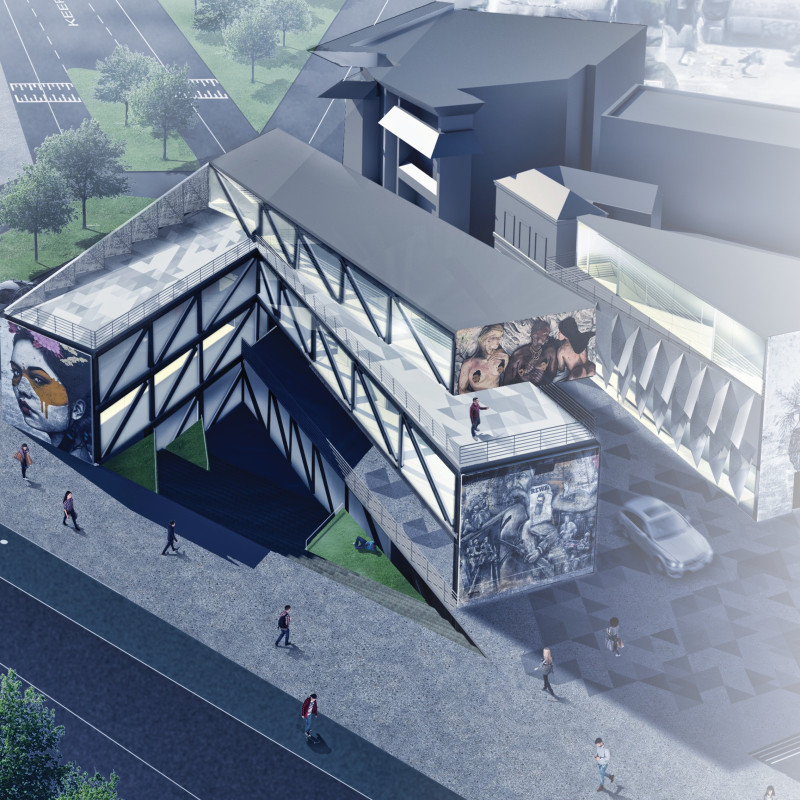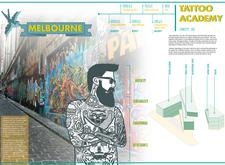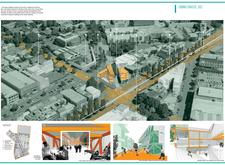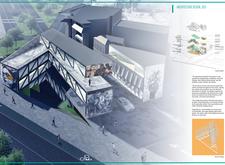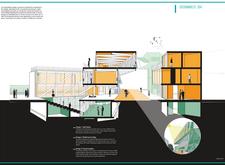5 key facts about this project
At its core, the design serves as a multifunctional space, merging various activities into a cohesive environment that fosters community interaction and engagement. Each area within the project has been carefully delineated to ensure that users experience a natural flow from one function to another, enhancing usability and promoting social connections. The layout presents an open-plan concept, allowing for flexibility in use while maintaining distinct zones that accommodate different activities. This thoughtful approach to spatial organization highlights an understanding of contemporary societal needs, where adaptability and multifunctionality are becoming increasingly important in architecture.
The unique design approaches undertaken in this project are evident from its material selections and architectural language. The choice of materials reflects not only aesthetic considerations but also a dedication to longevity and sustainability. Utilizing locally sourced materials such as reclaimed wood, sustainable concrete, and glass, the design aims to minimize environmental impact while creating a warm and inviting atmosphere. This careful curation of materials not only enhances the visual appeal but also ensures durability and low maintenance over time. The transparency afforded by large glass facades creates a dialogue between the interior spaces and the external environment, effectively blurring the lines between inside and outside. This design decision fosters a connection to nature, inviting natural light to permeate the space, which contributes to a healthier and more enjoyable environment for users.
In addition to its materiality, the project employs innovative construction techniques that enhance its structural integrity while maintaining a minimal visual impact. The strategic placement of structural elements allows for wide spans and open interiors, providing an uninterrupted experience that can adapt to future needs. This forward-thinking approach is complemented by energy-efficient systems integrated into the design, including solar panels and rainwater harvesting solutions, which underscore the project’s commitment to reducing its carbon footprint.
Moreover, the architectural details reflect a meticulous attention to craftsmanship and quality. Features such as custom millwork, textured wall treatments, and a carefully considered color palette contribute to the overall ambiance of the space, making it not only functional but also aesthetically pleasing. The interplay of light and shadow, facilitated by the architectural design, adds an additional layer of depth to the user experience, fostering an environment that is dynamic and ever-changing throughout the day.
This project stands out for its holistic approach to design, considering not only the aesthetics and functionality but also the emotional and psychological well-being of its occupants. The incorporation of green spaces, such as gardens and terraces, encourages a connection to the outdoors, promoting mental health and providing spaces for relaxation and social interaction. The architectural design embraces the principles of biophilic design, allowing users to enjoy the benefits of nature within their daily lives.
In summary, this architectural project exemplifies a balanced approach to contemporary design, merging sustainability with functionality and aesthetic appeal. It serves as a model for future architectural endeavors, showcasing how thoughtful design can create spaces that enrich the quality of life for users while respecting and enhancing the natural environment. For those interested in delving deeper into the project, exploring elements such as architectural plans, architectural sections, architectural designs, and architectural ideas will provide a comprehensive understanding of the nuances that make this project a notable contribution to the field of architecture.


